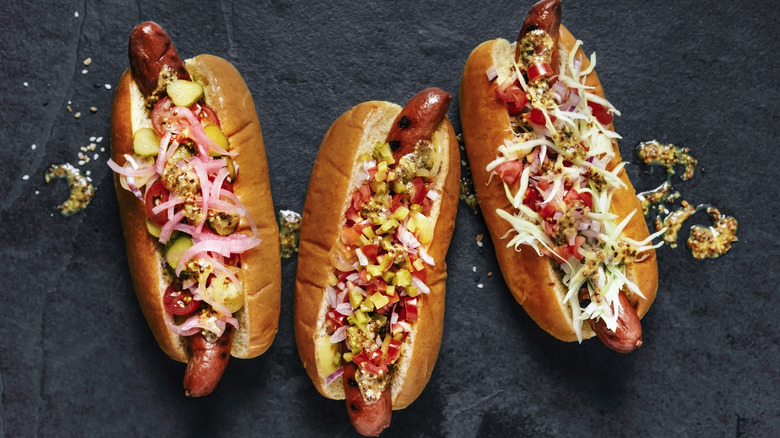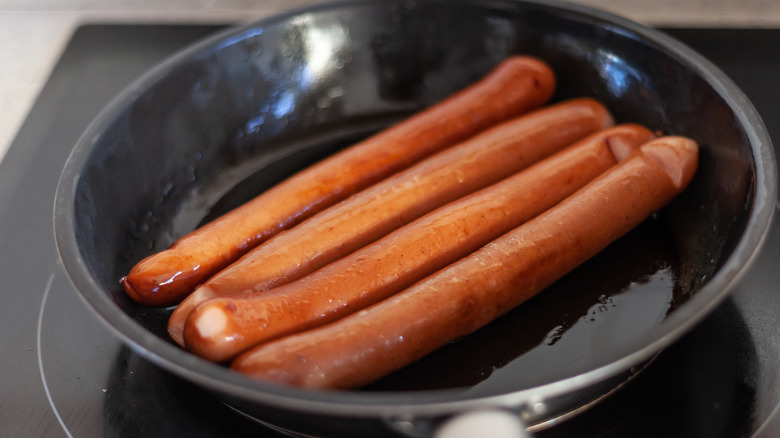The Easy Way To Make Grilled Hot Dogs Taste Like Restaurant-Quality
To some folks, a hot dog is a hot dog. For those who revel in a good dog, however, there is a world of difference between a killer frank and a lousy one. Now, it's worth noting that sometimes the best dogs are hiding in the most unlikely places — like gas stations, for example. But the same thing that makes a gas station hot dog taste so good is the same thing that makes any hot dog taste good.
According to Harris Mayer, chef and owner of Creamline in New York City, you should use a low-and-slow cooking method. While blasting a hot dog in the microwave can effectively cook it when you're in a pinch, it certainly doesn't produce a stellar dog. (If you absolutely must microwave it, at least make sure you use paper towels to reduce sogginess.) But the real magic happens when you take things slowly.
"Brush them with a little oil so the casing doesn't dry out and then crisp them slowly over low heat to accentuate their snap," Mayer tells Mashed. The highly coveted snap is provided by the hot dog's casing, which is more pronounced when natural casing — typically made from sheep or pig intestine — is used. Browning the casing works to deepen the flavor and, Mayer points out, intensifies the snap factor.
A greasy pan makes for a good dog
The low-and-slow cooking method works well for hot dogs because it improves the taste and texture. More than that, though, it also works to preserve the integrity of the dog. "High heat can cause them to split," says Harris Mayer, adding, "You want that casing in tact." While boiling can also be a good way to keep the casing from splitting, it also removes the browning aspect, a quality which is paramount for the perfect flavor profile.
Speaking of browning, make sure you don't skimp on the oil or butter when heating up those dogs. While Martha Stewart upgrades her hot dog with a buttered bun, a touch of butter or oil thrown in with the dogs also helps them to cook more evenly. Thanks to the Maillard reaction, the oil or butter will also undergo a sort of browning effect, adding that rich, almost caramelized element that has likely been present in every hot dog you've ever loved. "Basically, I'm always trying to replicate Gray's Papaya or Ben's Kosher Deli hot dogs," Mayer says, referencing two famous greasy spoon-type joints in NYC, the former of which famously browns its dogs on a greased-up flat top grill.

